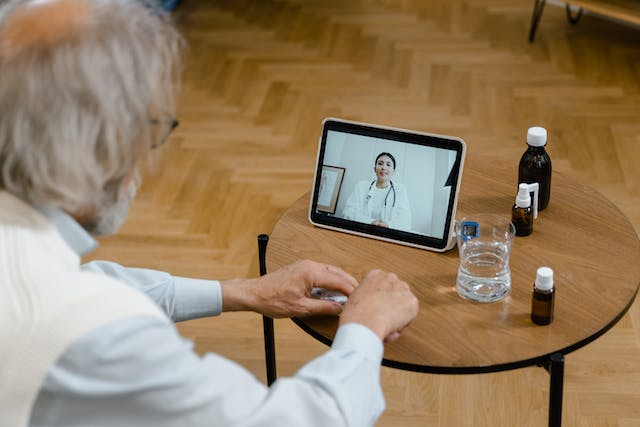In recent years, the confluence of technology and medicine has birthed transformative solutions, pushing the boundaries of traditional healthcare. At the forefront of this revolution is telemedicine, a realm rapidly redefining the accessibility and delivery of treatments. One of the most significant breakthroughs within this domain is online Testosterone Replacement Therapy (TRT). This emerging modality offers patients an innovative, efficient, and convenient avenue to address hormonal imbalances.
Understanding Testosterone Replacement Therapy (TRT)
Testosterone is an important hormone that significantly impacts the development of male sexual characteristics, muscle strength, bone density, and overall health and well-being. As people grow older, their testosterone levels decrease naturally. This can result in symptoms such as fatigue, reduced libido, and mood changes.TRT helps to restore testosterone levels to a normal range, alleviating these symptoms and improving quality of life.
The Science Behind TRT
TRT typically involves the administration of testosterone in various forms, such as injections, patches, gels, or pellets. These methods supplement the body’s natural testosterone production or replace it altogether. The goal is to achieve optimal testosterone levels within the normal range for each individual.
Who Needs TRT?
TRT is primarily prescribed to individuals with low testosterone levels, usually confirmed by blood tests. Common causes of low testosterone include aging, certain medical conditions, hormone imbalances, or previous treatments like chemotherapy. Symptoms such as erectile dysfunction, low energy levels, and decreased muscle mass may indicate a need for TRT.
Benefits and Risks of TRT
TRT has been widely studied and has demonstrated numerous benefits for individuals with low testosterone levels. These benefits include improved energy levels, increased libido and sexual function, enhanced mood and cognitive function, and increased muscle mass and bone density. However, like any medical intervention, TRT also carries risks. You may experience side effects such as acne, fluid retention, sleep apnea, and an elevated risk of certain cardiovascular conditions.
The Rise of Telemedicine
Telemedicine refers to the use of technology to provide healthcare services remotely. Recently, it has become more popular because of its convenience, accessibility, and the possibility of saving costs. With the advancements in digital communication and medical data sharing, telemedicine has become a game-changer in the healthcare industry.
Defining Telemedicine
Telemedicine encompasses various healthcare services, including virtual consultations, online diagnosis, remote monitoring, and prescription delivery. Utilizing video conferencing, secure messaging platforms, and medical apps, telemedicine connects healthcare providers and patients in a virtual setting, breaking down the barriers of distance, time, and mobility.
The Impact of Telemedicine on Healthcare
Telemedicine has dramatically expanded access to medical care, particularly for individuals in rural areas or those with limited mobility. Telemedicine has transformed healthcare from a brick-and-mortar model to a virtual one, allowing patients to receive quality care without extensive travel or time-consuming in-person visits.
Telemedicine and Patient Convenience
One of the critical advantages of telemedicine is the convenience it offers patients. Online consultations eliminate the need for long wait times in crowded waiting rooms, endless commutes, and time off work. Patients can easily schedule appointments, discuss their concerns with healthcare providers, and receive prescriptions from the comfort of their own homes. Telemedicine also saves time and money, making healthcare more accessible to individuals with busy schedules or financial constraints.
The Intersection of TRT and Telemedicine
Online TRT allows individuals to access the necessary care, medications, and monitoring without constant in-person visits. This presents a new era for TRT as it becomes more accessible and patient-centered.
How Telemedicine is Changing TRT
Telemedicine has eliminated many of the barriers that traditionally accompany TRT. Patients no longer need to take time off work or spend hours commuting to healthcare providers’ offices for injections or prescriptions. Instead, they can consult healthcare professionals online, discuss their symptoms, and receive personalized treatment plans. Telemedicine has made TRT more convenient, accessible, and tailored to individual needs.
The Process of Online TRT
Usually, when you seek hormone replacement therapy online, you’ll have an initial virtual consultation with a healthcare provider specializing in that area. The patient’s medical history, symptoms, and hormone levels are assessed during this consultation. If TRT is deemed appropriate, the healthcare provider devises a treatment plan and prescribes testosterone medications or other hormone replacement therapies. Follow-up consultations and monitoring can also be done online, ensuring patients’ progress is tracked and adjustments can be made as needed.
The Future of TRT and Telemedicine
As telemedicine continues to evolve and gain traction in the healthcare industry, the future of TRT looks promising. Emerging trends suggest exciting possibilities and advancements in both the delivery and accessibility of TRT.
Predicted Trends in Telemedicine and TRT
Telemedicine is expected to become even more widespread and integrated into healthcare systems globally. As technology advances, virtual consultations, remote monitoring, and digital health records will become the norm. This means greater access to TRT and other medical services for individuals in remote areas or those with limited access to specialized healthcare providers.
The Role of Innovation in TRT Delivery
The future of TRT heavily relies on innovation. Advancements in medical technology will enhance the effectiveness and convenience of TRT, ranging from better delivery methods to more accurate dosing. Potential breakthroughs include the development of novel hormone replacement therapies, personalized treatment plans based on genetic profiles, and improved hormone monitoring methods.
Ensuring Quality and Safety in Online TRT
With the increasing popularity of online TRT, it is crucial to prioritize quality and safety. Regulatory bodies and telemedicine providers must continue to establish guidelines and standards to ensure that online healthcare services meet the same high standards as in-person care. This includes safeguarding patient privacy, verifying the credentials of healthcare providers, and implementing secure platforms for telemedicine consultations and data transmission.
The credibility of a TRT clinic plays a vital role in guaranteeing optimal outcomes and patient well-being. Recognized for its commitment to excellence, Best TRT stands as a beacon of trust in the digital TRT landscape. The platform prioritizes evidence-based approaches, harnesses the expertise of certified professionals, and places patient safety at its core.
Takeaway
Online TRT is transforming the landscape of testosterone replacement therapy, offering a more convenient and patient-centered approach. Telemedicine has revolutionized healthcare, making it more accessible, affordable, and convenient. The intersection of TRT and telemedicine presents a promising future, where individuals can receive the care they need without time or location limitations. As technology advances and regulations adapt, online TRT will continue to shape the future of testosterone replacement, providing a new era of optimized well-being and quality of life.
Related Posts












